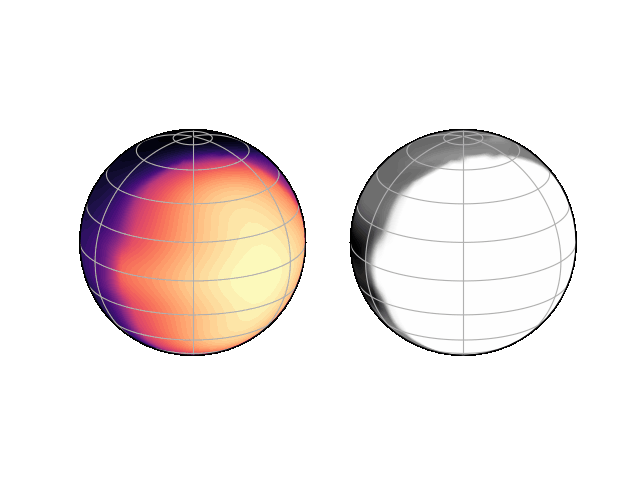Among the 5,500 or so exoplanets discovered to date, "Hot Jupiter" planets have been extensively observed and characterized by telescopes on the ground and in space. The aim is to understand the mechanisms that govern their atmospheres.
Among the array of instruments available, the new James Webb Space Telescope can probe these atmospheres with unrivalled precision and spectral coverage.
These planets have short orbital periods (a few days) and are highly irradiated. Their distinctive feature is that they always present the same face to their star (like the Moon around the Earth). This induces a very strong thermal contrast between the permanent day side (between 1000-1800℃) and the permanent night side (between 500-1300 ℃).
A tailor-made climate model
To complement the observations made by the JWST, a French team including Lucas Teinturier, a PhD student at Observatoire de Paris - PSL, has developed a Global Climate Model (GCM). This is a three-dimensional numerical model for simulating planetary atmospheres. Inspired by the study of the Earth’s climate, it can be used to interpret observations and thus understand the physical, dynamic and chemical processes at work in these exotic atmospheres.
The scientific team has therefore focused on the possible presence of clouds on the night side of these planets, and their impact on the thermal and dynamic structure of the atmosphere, as well as their effects on observations.
The study focuses on the case of a Warm Jupiter, WASP-43 b, recently observed by the Webb Telescope with the low-resolution mid-infrared spectrometer MIRI-LRS.

Numerical simulations show that clouds form naturally on the night side of the planet, and have a warming greenhouse effect on the atmosphere. Clouds also modify atmospheric circulation, reducing wind speeds in particular.
Comparison with observations from the Webb Telescope confirms the presence of clouds on the night side of the planet, but only on this side, and not on the day side.

Given the temperature conditions prevailing on WASP-43 b, these clouds should be composed of rocky particles, but their composition is not yet clearly identified.
Reference
This work appears in the journal Astronomy & Astrophysics under the title : "The radiative and dynamical impact of clouds in the atmosphere of the hot Jupiter WASP-43 b" par L. Teinturier, B. Charnay, A. Spiga, B. Bézard, J. Leconte, A. Mechineau, E. Ducrot, E. Millour, N. Clément.
